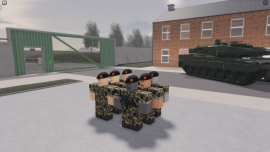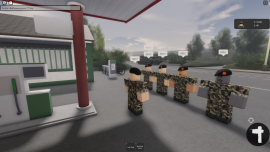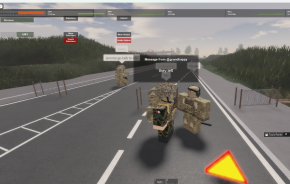3rd Cork-Celtic War: Difference between revisions
No edit summary |
No edit summary |
||
| Line 3: | Line 3: | ||
{{BattleTemplate | {{BattleTemplate | ||
|color=#8F0002 | |color=#8F0002 | ||
|beligerent1= [[File:Flag_Of_Corcaigh.png|35px]] '''[[Nation:_Corcaigh|Free State Of Cork]]''' | |beligerent1= [[File:Flag_Of_Corcaigh.png|border|35px]] '''[[Nation:_Corcaigh|Free State Of Cork]]''' | ||
* [[File:Flag_Of_Pomerania.png|25px]] '''Pomerania''' <small>(Never declared. Only sent Aid)</small> | * [[File:Flag_Of_Pomerania.png|border|25px]] '''Pomerania''' <small>(Never declared. Only sent Aid)</small> | ||
* [[File:Flag_Of_Croatia.png|25px]] '''Croatia''' | * [[File:Flag_Of_Croatia.png|border|25px]] '''Croatia''' | ||
|beligerent2 = [[File:Flag_Of_Celtic_Union.png|25px]] '''[[Nation:_Celtic_Union|Celtic Union]]''' | |beligerent2 = [[File:Flag_Of_Celtic_Union.png|border|25px]] '''[[Nation:_Celtic_Union|Celtic Union]]''' | ||
* [[File:Flag_Of_Denmark.png|25px]] '''Denmark''' | * [[File:Flag_Of_Denmark.png|border|25px]] '''Denmark''' | ||
* [[File:Flag_Of_Donegal.png|25px]] '''Donegal''' | * [[File:Flag_Of_Donegal.png|border|25px]] '''Donegal''' | ||
|leaders1 = grandhappy | |leaders1 = grandhappy | ||
|leaders2 = killenoob08 | |leaders2 = killenoob08 | ||
Revision as of 23:35, 6 March 2024
| ||||||||||||||||||||||||||||||||||||||||||
The 3rd Cork-Celtic War, also known as the War Of Donegal was fought between the Celtic Union and Free State Of Cork. The war lasted from the 8th of January 2023 to the 15th of January 2023 and had around 700 total deaths though the true count is unknown and can be much higher.
The war itself was primarily thought in the Donegal province which at the time was an independent puppet state of the Celtic Union.
Prelude
Cork crisis
Before the war started Cork reclaimed independence sometime before the war however that was limited to the county Cork boundaries, this wouldn't do for the Corkonian leader and in so the Army was expanded, before the war was declared Cork had around 8-11 active soldiers with the Celtic Union rallying over 9 consistently, the Celtic Union also had a strong ally, Denmark. The main Celtic Union approach to the Cork Crisis was to immediately prepare for a war. All Celtic armed forces evacuated county Cork and setup positions in Limerick and Waterford. Before the war, conflict broke out in Waterford which resulted in more than 50 deaths.
The War
The war was fought from the 8th of January to the 15th of January and was only fought on the island of Ireland, both sides had extensive losses in multiple fronts, the most prominent battle was the battle of Ballinlough which had multiple skirmishes. There was multiple air campaigns on both sides, notably when the Celtic Union launched a successful airstrike a Corkonian port and sunk one patrol vessel and when the Corkonian Airforce launched air support campaigns in the Northern part of Ireland
The Beginning
Bridgened Preparations
The Celtic government knew an attack was imminent by the Corkonian army or multiple militia groups across the island, one such target was Bridgend located in Co. Donegal. As such the Celtic Army ordered 1 platoon to garrison the small town against any potential Cork attacks, the platoon being the 1st Platoon 1st Tipperary Regiment. The platoon consisted of 6 soldiers and multiple armoured elements.


Battle Of Bridgend
The battle of Bridgend took place on the 8th of January 2023, it was a decisive Corkonian victory and the main ignition of the 3rd Cork-Celtic War. The battle started when British troops on the border were attacked by the terrorist group PROVOs, in which the Corkonian Militia there launched a series of successful attacks on the Celtic side, less than 5 Corkonians attacked the city against a much larger 8 Celtic force with better equipment and the use of armoured vehicles.

The Corkonians resorted to guerrilla warfare which proved to be effective. However, this enjoyment of victory wouldn't be enjoyed for much longer, as the battle of Bridgend led onto the 2nd battle of Ballinlough.
The Battle Of Ballinlough
The Battle of Ballinlough (2nd battle of ballinlough) was the main conflict of the 3rd Cork-Celtic War, both sides spent massive amounts of resources and soldiers to ensure the town was theirs. More than 500 deaths came from this battle, many soldiers described Ballinlough as a meatgrinder.
The start of the battle
Events at Ballinlough were miniscule at first, occasional border skirmishes and gunfire exchange, at one point a Corkonian group infiltrated the Celtic Union by sneaking past the border and opened fire on Celtic Gardai and Armed forces, this triggered a major response with the Celtic Union deploying 2 Bradley's and an attack helicopter. In the next week multiple skirmishes ensued and at the end the battle was a Celtic Victory with an extreme cost, more than 20 Bradley's lost, 3 Leopard 2A's lost and 3 cobra attack helicopters shot down, the Corkonian side lost more than 20 Chieftan tanks and 2 utility helicopters, which at the time was the bulk of their airforce.
The end of the battle
The Corkonian army high command saw no point in continuing the fight for Ballinlough and deemed it a lost cause, the Celts were only ramping up the defence with them sending more tanks, more air support and the Danes deploying their main force there. It simply became an impossible battle. Cork launched one last desperate attack into the city and failed with the entirety of the armoured support being destroyed or captured.
The End Of The War
With deaths ramping up the potential of it escalating into a Europe wide war, both parties of Cork and the Celtic Union agreed to a ceasefire, eventually a peace deal was signed which ended the 3rd Cork-Celtic war. The peace treaty was as followed:
- The Celtic Union must agree to return to v1 borders
- Cork must agree to give up South East Donegal
- Cork gains an exclave in Wicklow
- Cork and the Celtic Union must sign a peace treaty
- Cork is too stay neutral in the 2nd Celtic-Anglo war
- The Celtic Government is forced to recognise Corkonian Independence
- The Cork-Galway war begins with the Celts abstaining
Neither side technically won the war, the Celtic Union failed to re-gain lost land and was forced to loose Donegal whilst the Corkonians lost huge amount of casualties and was repelled multiple times from key objectives. It was a global catastrophe as well with the world being plummeted into distrust and conflict, the war would spark an entirely new war, the Cork Donegal War which lasted from the 16th of January 2023 to the 12th of February 2023. This would not be the last war between Cork and the Celtic union, as shortly after both sides would be plummeted into the 4th-Cork Celtic War. The victory is considered a Celtic one by many, it proved the SON was ready and willing to deploy and help its allies and proved the army was capable of doing urban warfare with the victories in Bridgend and Ballinlough however many say it was a Corkonian victory was Ballinlough and Bridgend were only won by excessive Celtic deployment.
Foreign Intervention
Intervention on Cork's Side
As soon as Cork declared war, Croatia intervened on Cork's side and instantly declared war and announced the sending of military arms and soldiers, Pomerania declared they would be sending aid to Cork however would refrain from sending soldiers. The United Kingdom did allow Cork to garrison within its territories and also sent aid in uniforms, guns and soldiers.
Intervention on Celtic Union's Side
As Cork declared war on the Celtic Union it resulted in the immediate entering of Donegal into the war. Donegal was a minor nation and did not have a standing army, only around 3 soldiers with no armoured or air support. Denmark instantly joined the Celtic Union as it was in the Shield Of Nations alliance and was required to help. Denmark sent aid in soldiers and military gear along with general aid, additionally Denmark condemned the Corkonian declaration of war and also condemned the Croatian entry of the war.
Aftermath
The war destabilised a lot of western Europe, it began the first parts of the 2nd Corkonian Empire and with it emerged new conflict in Ireland, the 2nd Celtic-Anglo war was going on at the time and there was multiple skirmishes on the border between Cork and the Celtic Union. Additionally, the day after the war ended, Cork was back at war after the invasion of Donegal (which was a Corkonian victory). Internationally the war was condemned by major nations.